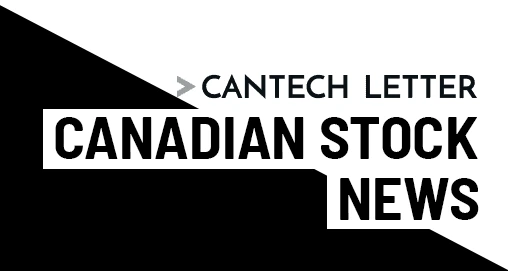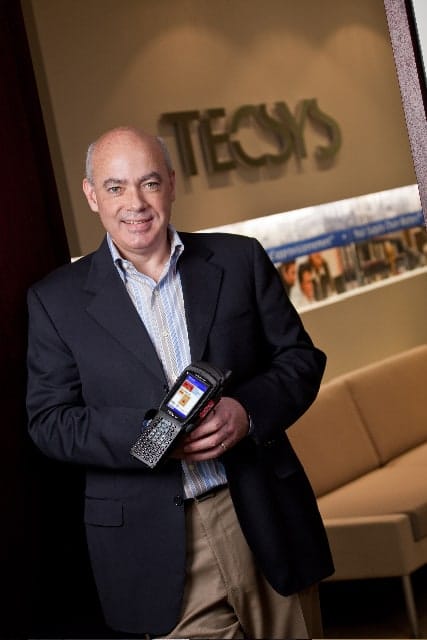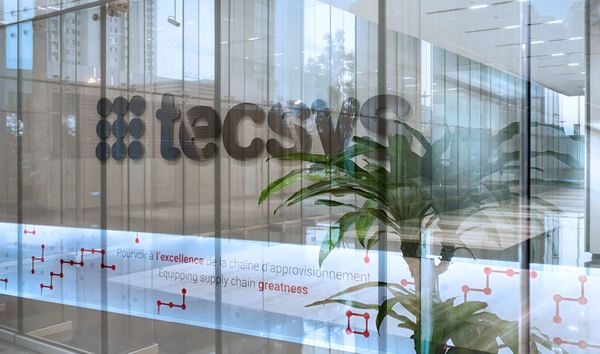

Ever since the first raw material was delivered to the first customer mankind has muddled through supply chains. The use of supply chain management systems has become a way for smaller manufacturers to gain an advantage over competitors, but has become an absolute necessity for multinationals looking to stay competitive. A window into the supply chain can improve customer satisfaction, reduce excess inventory and the time between the manufacture of a product and its sale.
Montreal’s TECSYS (TSX:TCS) counts some of the largest companies in the world as clients. The company is developing a reputation as an innovator in the maturing space. The company’s visual oriented radio frequency device, for instance, uses simple, intuitive visual cues to prompt the end user where to find the product on the shelf, which bar code to scan and how to package an order. Recently, Cantech Letter talked to TECSYS’ President and CEO Peter Brereton.
Peter, thanks for taking the time to talk to us at Cantech Letter. For our readers who aren’t familiar can you fill us in on a bit of the history of TECSYS?
We started in 1983 and for about ten years we were a reseller of an enterprise system in Canada. We realized along the way that there wasn’t a good enough distribution management system in the market at the time, so in partnership with a customer in 1992 we spent about a couple of years developing the beginning of our distribution management system. In 1993 we entered the US market by winning the business of a major telecom company, it was a good beachhead that helped to launch our marketing effort in the U.S., and we took off from there. We grew from about $3.5 million in 1993 to about $10 million when we went public in 1998. During this time, we entered the healthcare market with the business of the likes of Shoppers Drug Mart, McKesson and Cardinal Health among others. In the early 2000’s, while continuing to work on gaining market share in the healthcare and high-volume distribution industries, we advanced our platform with Java and browser-based technology, we also picked up a couple of acquisitions that got us into good new markets such as automotive parts and Caterpillar dealers. In the last three years or so we have focused further on vertical markets and on streamlining our operations; both of which have enabled us to consistently generate cash and positive returns. With the exceptions of one or two unusual quarters, we have been profitable the last three and half years.
What verticals in supply chain management are currently the biggest drivers of growth?
I will have to say it is healthcare. Particularly the hospital supply network area where we are currently leading the market. In fact Gartner has recently studied this area and has put out a report that addresses what hospitals should be doing to streamline their supply chain. Their scenario is very much in line with what we do.
How do you target potential clients, is it by size, by industry vertical, geographic area?
Although we have a number of Fortune 500 customers, for the most part, our sweet spot is the mid-market; clients that are between $50 million and $1 billion in revenue. We are targeting distribution-centric organizations in vertical markets like hospital supply networks, specialty drug distribution organizations like sample drug distributors or vaccines distributors such as McKesson and Cardinal. Besides healthcare, key high-volume distribution verticals for us are Caterpillar dealers, gas & welding, giftware and general high-volume distributors like Canon.
Your clients always seem to point out how easy your software is to use. Was a simple user interface something you focused a lot on?
We would like to think that, in addition to simplicity in using the product, the distribution process that we deliver to customers is as important. Larger supply chain software organizations tend to force on customers the way their software works. So, the distributor has to change his way of “success”, if you will, and the way they do business to follow that software company’s approach. We don’t; our software works with their business model and empowers them to streamline and execute their supply chain strategy. In addition to that, we have always been preoccupied with the needs of the user; the purchasing clerk, the sales person, the receiving clerk or the picker on the warehouse floor, in that their efficiency and satisfaction level come from being able to interact with the technology intuitively, that’s where we excel. In fact, our visual solution on the radio frequency device is perhaps the most talked about in the industry today. It is a solution that gives cues to the user where to find the product on the shelf, which bar code to scan and how to package an order, all with simple and intuitive technology.
Your stock was over $50 during the dot com days then fell well below a dollar. You’re now steadily growing revenue. Having started TECSYS nearly three decades ago and being public for nearly half of that, you are as qualified as anyone to talk about the importance of simple perseverance. How important is it to not being tricked into constantly equating your share price with the value of your business, through highs and lows?
The dot com era with the inflated share prices of most high-tech companies comes once in a life time. Some have called it the gold rush and by no means was it real in the longer term. Having said that, as management of a public company, we are focused on building a sustainable solid business, which in turn builds shareholder value for the longer term, the share price eventually takes care of itself. In Q3, 2011, ended January 31, 2011, EPS was six cents per share, annualized Return on Equity (ROE) was 17.8%, backlog increased to $21 million and recurring revenue reached over $14 million. These are the kind of results that drive shareholder value.
Recently, research firm Gartner described TECSYS as a “visionary” in its sector (2010 warehouse management systems magic quadrant report). What does this mean to you?
We are a different kind of a supply chain software company, with an end to end view of the supply chain and an efficient way to operate that supply chain from the back office to the shipping dock and beyond. Recognition by Gartner reaffirms the quality and strengths of our credentials. It also provides us with strong credibility that opens doors to prospective clients that otherwise may have not considered us before.
Leave a Reply
You must be logged in to post a comment.





 Share
Share Tweet
Tweet Share
Share




Comment